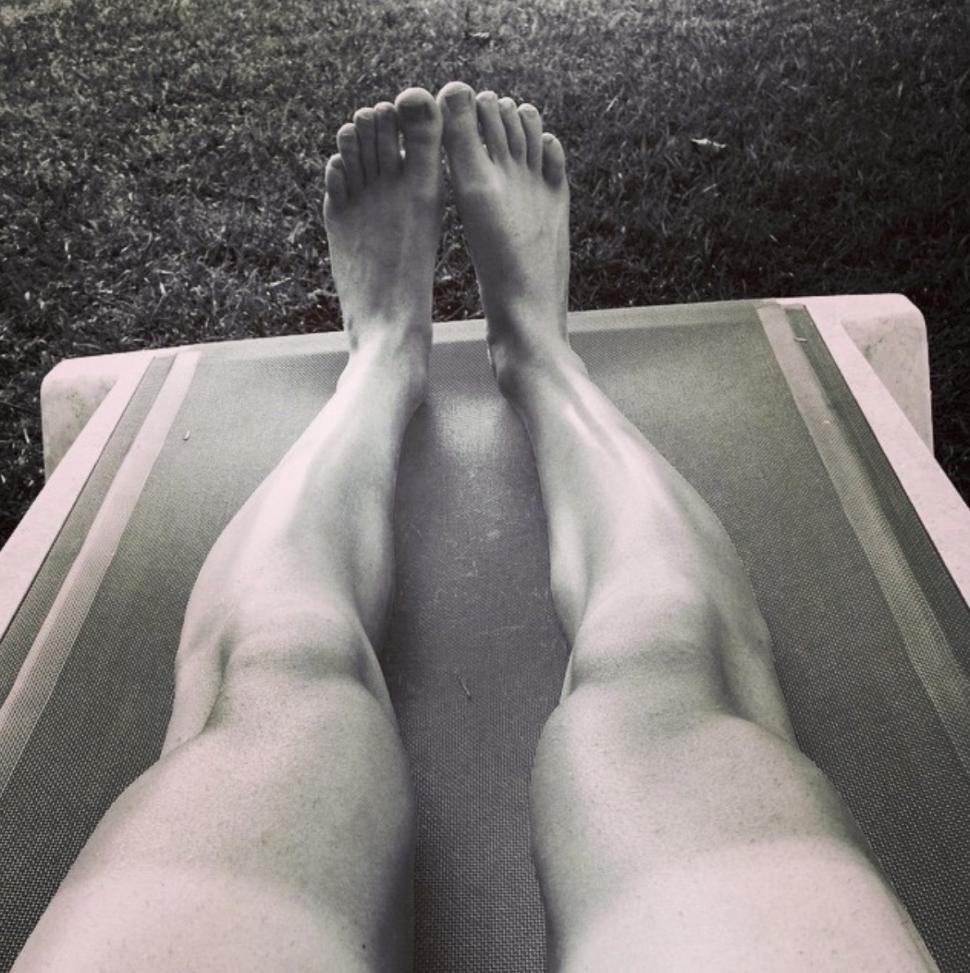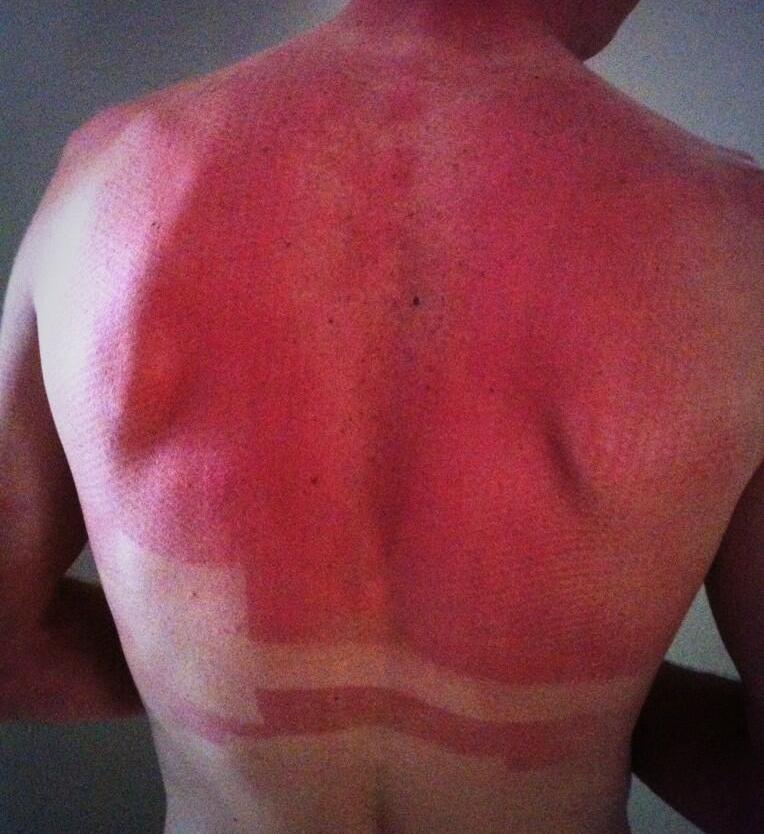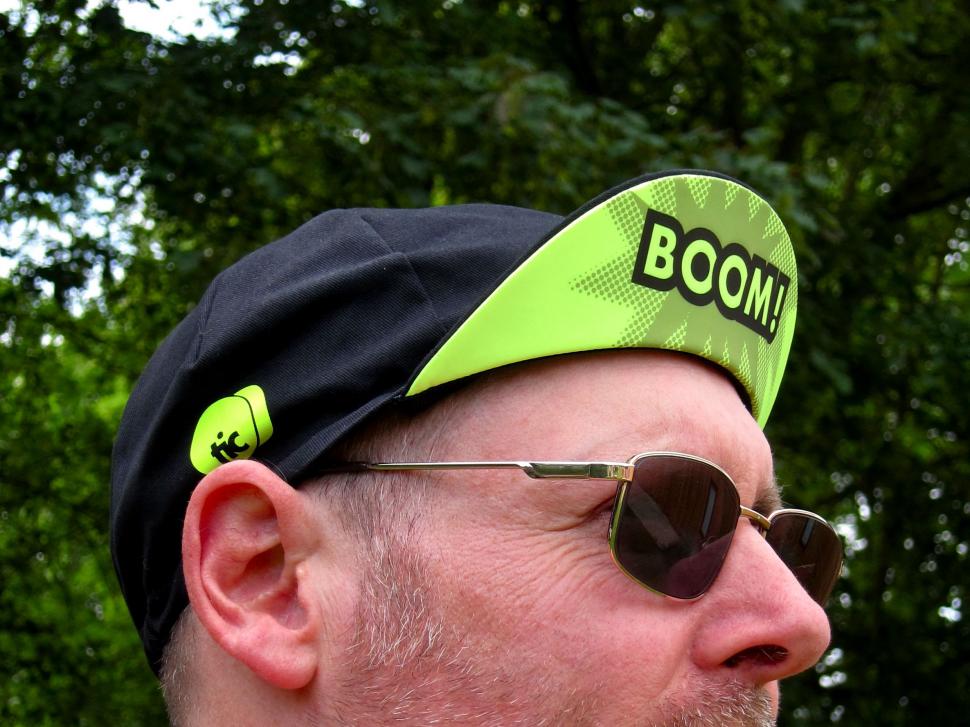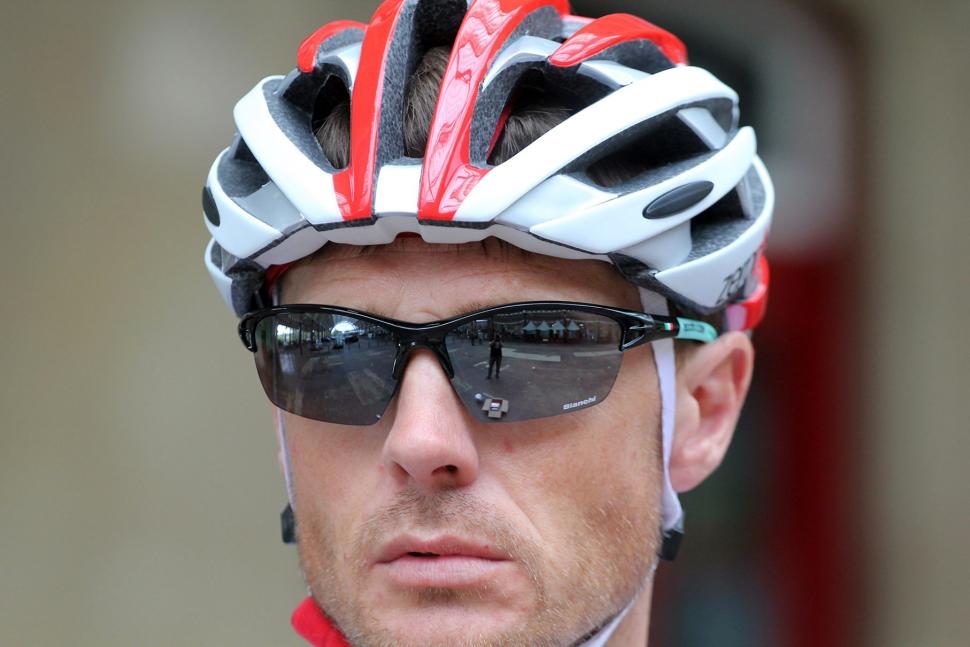- News
- Reviews
- Bikes
- Accessories
- Accessories - misc
- Computer mounts
- Bags
- Bar ends
- Bike bags & cases
- Bottle cages
- Bottles
- Cameras
- Car racks
- Child seats
- Computers
- Glasses
- GPS units
- Helmets
- Lights - front
- Lights - rear
- Lights - sets
- Locks
- Mirrors
- Mudguards
- Racks
- Pumps & CO2 inflators
- Puncture kits
- Reflectives
- Smart watches
- Stands and racks
- Trailers
- Clothing
- Components
- Bar tape & grips
- Bottom brackets
- Brake & gear cables
- Brake & STI levers
- Brake pads & spares
- Brakes
- Cassettes & freewheels
- Chains
- Chainsets & chainrings
- Derailleurs - front
- Derailleurs - rear
- Forks
- Gear levers & shifters
- Groupsets
- Handlebars & extensions
- Headsets
- Hubs
- Inner tubes
- Pedals
- Quick releases & skewers
- Saddles
- Seatposts
- Stems
- Wheels
- Tyres
- Health, fitness and nutrition
- Tools and workshop
- Miscellaneous
- Cross country mountain bikes
- Tubeless valves
- Buyers Guides
- Features
- Forum
- Recommends
- Podcast
feature
 Suntan lines - 1.jpg
Suntan lines - 1.jpgCycling survival — how to avoid sunburn & stay comfortable
The sun's out! And so if you're planning some hot weather rides, it's important that you avoid getting sunburn.
Getting out in the sunshine is one of the glories of cycling. But with the wind in your hair, it’s easy to forget that the sun can really get its teeth into your skin, and a long day on the bike gives it plenty of time to chew your exposed skin.
Sunburn is no fun. Your skin ends up red and sore. In extreme cases it can even blister. After a few days it peels and can itch like like hell.
As well as the short-term discomfort, sunburn now can lead to skin cancer later in life. In its most aggressive form, melanoma, skin cancer can quickly spread and become life-threatening. According to Cancer Research UK a history of severe sunburns doubles your risk of melanoma, and the incidence has been rising for the last few decades as people take more holidays in hot, sunny countries.
Sunburn is caused by the short-wavelength, high-energy ultra-violet (UV) light in sunshine. The burn itself is caused by short-wavelength UVB rays, but UVA can cause skin damage too, so you want a sunscreen that blocks both.
I lived in Australia for several years, a country full of pasty white people that has a big problem with the consequences of excessive sun exposure. Public health campaigns have had some effect in changing people’s behaviour, especially the classic “slip, slap, slop”:
- Slip on a shirt
- Slap on a hat
- Slop on some sunscreen
It’s good advice even if you don’t live somewhere the sun can fry you in mere minutes. Australia’s Cancer Council has added two more bits of alliterative advice: Slide on sunglasses; and seek shade.
Staying in the shade isn’t very practical if you’re riding a bike, but let’s look at how to best carry out the other four.
It’s worth pointing out that these precautions are especially important if you have pale skin, red hair, lots of moles or freckles or are one of those unfortunate folks who always or usually burns rather than tans. But you should still take precautions even if you have dark hair, brown eyes and usually tan, because it’s easy to be out on the bike for long enough to burn if the weather’s good.
Slip on a shirt
Or any other sun-protective clothing. Many cycling shirts are now rated for their Sun Protection Factor (SPF), in the same way as suncreams. Cycling shorts are usually similarly opaque unless they’re very old and worn, in which case you should think about the view you’re inflicting on your riding companions and bin them.
It’s traditional to ditch sleeves and leg coverings at the first hint of good weather, but if it’s still cool enough for arm and leg warmers, you should carry on wearing them. You can get lightweight warmers specifically designed for sun protection, or wear Lycra tights or three-quarters to protect the tops of your knees.
>>Read more: The best summer cycling jerseys
>>Read more: Cycling jerseys — everything you need to know
>>Read more: The best cheap cycling jerseys
Slap on a hat
Tricky, this one. On any sort of drop-bar bike you’re not going to be able to easily keep on the sort of wide-brimmed hat the Aussies have in mind. A traditional cycling cap, on its own or under a helmet, provides a bit of protection especially if you’re not well-thatched. The shade from a peak, on either cap or helmet, will help keep the sun off your face, but you’ll still need sunscreen.
>>Read more: All reviews of cycling headwear
Slop on sunscreen
Suncream should have an SPF of at least 30, and preferably 50. In theory that means you can stay in the sun for 30 (or 50) times longer than if your skin were bare, but in practice a number of things can reduce the protection sunscreen provides.
To maximise the effectiveness of sunscreen you should apply it plentifully, at least 20 minutes before you go out. That means at least a teaspoonful on each limb and an equivalent amount on other exposed skin like your face, ears and the back of your neck.
Sweat can displace sunscreen, so the more water-resistant the formula the better, and you should apply a top-up every two hours. That means a small tube of sunscreen is a summer jersey pocket essential.
Sunscreens contain chemicals that absorb UV rays before they get to your skin, or physical barriers such as ultra-fine particles of zinc oxide or titanium dioxide that reflect it, or both. According to the Skin Cancer Foundation many sunscreens combine several different chemical and physical ingredients in order to provide broad-spectrum protection.
There are usually at least three active ingredients including PABA derivatives, salicylates, and/or cinnamates (octylmethoxycinnamate and cinoxate) for UVB absorption; benzophenones (such as oxybenzone and sulisobenzone) for shorter-wavelength UVA protection; and avobenzone, ecamsule (MexorylTM), titanium dioxide, or zinc oxide for the remaining UVA spectrum.
Slide on sunglasses
Repeated exposure to bright light and UV can cause a range of short- and long-term eye problems including including cataracts, macular degeneration, growths on the eye known as pingueculae and pterygia, and photokeratitis (‘snow blindness’).
In the UK, sunglasses have to meet British Standard BS EN 1836:2005, so look out for markings that indicate compliance and don’t buy anything that doesn’t meet the standard.
You should also check sunglasses for consistency and optical clarity by looking through them at arm’s length to see if they excessively distort the view.
On a bike sunglasses also help keep bugs and other flying crud out of your eyes, so as well as dark lenses for daylight, it’s worth having a second pair with clear or yellow lenses for low-light riding.
>>Read more: the best cycling sunglasses
>>Read more: the best cheap cycling sunglasses
John has been writing about bikes and cycling for over 30 years since discovering that people were mug enough to pay him for it rather than expecting him to do an honest day's work.
He was heavily involved in the mountain bike boom of the late 1980s as a racer, team manager and race promoter, and that led to writing for Mountain Biking UK magazine shortly after its inception. He got the gig by phoning up the editor and telling him the magazine was rubbish and he could do better. Rather than telling him to get lost, MBUK editor Tym Manley called John’s bluff and the rest is history.
Since then he has worked on MTB Pro magazine and was editor of Maximum Mountain Bike and Australian Mountain Bike magazines, before switching to the web in 2000 to work for CyclingNews.com. Along with road.cc founder Tony Farrelly, John was on the launch team for BikeRadar.com and subsequently became editor in chief of Future Publishing’s group of cycling magazines and websites, including Cycling Plus, MBUK, What Mountain Bike and Procycling.
John has also written for Cyclist magazine, edited the BikeMagic website and was founding editor of TotalWomensCycling.com before handing over to someone far more representative of the site's main audience.
He joined road.cc in 2013. He lives in Cambridge where the lack of hills is more than made up for by the headwinds.
Latest Comments
- Rendel Harris 1 sec ago
One wonders if you really are this obtuse or simply being vexatious, like the naughty child at the back of the class who can only get the...
- David9694 3 min 48 sec ago
So you accept that households suffer from motor traffic? Well, it's a start. ...
- eburtthebike 5 min 4 sec ago
What comes after the post-truth age? The utter nonsense age, apparently. These are just a few examples, and I got bored with shooting fish in a...
- Rendel Harris 1 hour 15 min ago
Exactly what I said previously. Stop making a fool of yourself.
- mitchibob 6 hours 20 min ago
Herein lies difference between cyclist and just people that happen to ride bikes. If it did happen, the person riding the bike wasn't a cyclist,...
- dh700 9 hours 18 min ago
No, there are not. Not even close to that many involving vehicular killings by small-town cops....
- Spangly Shiny 10 hours 27 min ago
That's nearly as bad as 'wall crashed into car'.
- Spangly Shiny 11 hours 8 min ago
I think you need to flip the page in your Roget. The one you're on doesn't seem to fill you with Joie de vivre. Think grey and all you'll get is...
- oceandweller 11 hours 11 min ago
Bit reminiscent of the MTB world Jones bar. About the same price, too!
- Rendel Harris 11 hours 37 min ago
Well I was inspired by this discussion to try a 20 minute FTP test on Zwift yesterday and found to my surprise that according to it I'm not the 195...




Add new comment
28 comments
I've often wondered if the slow development of a tan over months is just as bad as getting a sunburn?
I don't think I ever burn but by June I tend to have a "biker's tan". I still wear sunscreen, but I feel I can handle the sun better.
Arm and leg coolers work great. A must here in the sonoran desert in Arizona USA. See Sugoi brand or similar. I found mine on Amazon.
Hey, you guys might be a tad early for this particular zombie article.
I think snow may be more of a problem than sunburn this weekend.
Since we moved up to the West of Scotland, sunburn has not been an issue. I have bought a lot of rain jackets though...
I noticed when I was in Oz a few years back that the roadies all had a cloth on the back of their helmets, like a desert hat, to keep their necks out of the sun. Good idea
Another P20 factor 50 fan here.
If you're off up mountains do remember to be careful, just because it is cooler doesn't mean there's less chance of sun burn. If anything, you're more at risk. Though at least in summer there's not the snow to make things worse- sun burn on exposed skin a major issue for skiers and snow boarders! The idea that you "don't burn in less than 27°C" is utter madness and a route to pain.
Couple of links that may provide a bit of food for thought against the perceived wisdom of making sure that no part of your skin ever comes into direct contact with sunshine.
https://drmalcolmkendrick.org/2016/03/23/sunbathing-is-good-for-you/
and
https://philmaffetone.com/the-sun/
I think I read on one of Dr Kendricks blogs that a cardiologist once said that he regarded his job as keeping people alive long enough so they could die of cancer.
With all due respect to the good doctor, doing analysis on data sets and actually conducting clinical trials are slightly different things, yes his point about people avoiding every bit of sunlight they can is probably valid, humans evolved outdoors after all, but advocating sunbathing as a preventative measure, particularly in the context of stating those who avoid sun exposure have the same risk of death as smokers, is a little irrisponsible as a lot of people will go all daily mail and take it out of context and to extremes.
The only sunburn I got this year was in Glasgow. I'm not sure moving North is 100% the solution.
P20 factor 50, a cap and a bushy beard works for me. We don't net get vitamin D, as cyclists, anyway due to the intensity of the sport so you may as well cover up and supplement.
Just move to the North East of England, it's permanently winter here so no need to practice safe sun, your more likly to get hypothermia than sun burn.
Chris Fs back looks hot ouch! Tops of your ears are very sensitive, mustn't forget to block those puppies. That dog looks awesome lol
Chris Fs back looks hot ouch! Tops of your ears are very sensitive, mustn't forget to block those puppies. That dog looks awesome lol
Ten minutes of sunlight a day is enough to get all the vitamin d you can use, or so a radiation therapist told me...
What about vitamin D with really high factor sunblock though?
I just read something that said vitamin D helps prevent certain types of cancer so round and round it goes.
I appear to be lucky in that I rarely burn and don't look like an aged prune either. Roll of the genetic dice I suppose.
I only burn at 27C+ and just get brown. Only red in when I was in Oz.
I would reccommend sunscreen to protect youself from long term sun damage and new freckles.
At 40 I look ok but wished I used sunscreen as a kid. My peers look much older though as if they smoked etc. We're living longer due to healthcare and diet, might as well look good at 90 lol.
Arm coolers are also great for extreme conditions. Not really a thing in the UK, I know a number of brands sell them, but picked them up in Asia about 10 years ago. Adds a layer of protection to your skin, especially in midday sun.
don't know if these are available in the UK but from too near a hole in the ozone layer, high UV even when cloudy Aus':
https://www.cancercouncilshop.org.au/store/shop_hats/shop_hats_treadley_...
looks like ship international for around $20 (at the moment exchange rate is around AU$2 = £1)
Not up to date on UK import regs but think if value more than £15 vat plus admin fee payable?
I only sport one of these for multiday riding all day trips but if you have any concerns about skin cancer are an excellent product
Also recommend the long sleeved, UV rated Ground Effect "Rock Lobster" top from NZ - excellent on hot sunny days, not a bargain but well made from good quality material and despite very regular use is lasting well
ps it is raining today!
Or do what I do and live in Scotland . . . . . . .
Kid's sunblock is the best, as it's usually a high factor and waterproof, and usually won't sting your eyes too much if it does melt.
I always use "Banana Boat Sport", very sweatproof and non greasy to apply, I have used it in Mallorca and Lanzerote with no sunburn and my son has used it on intensive rugby training camps in Southern France. As a teenager at the time he was able to apply it first thing and forget it for the rest of the day
I live and cycle in southern Spain. I protect myself wearing a British Army desert hat and a long-sleeved button-up polyamide shirt (Rohan or Decathlon). I can cycle all day without suffering sunburn or sweaty patches.
Good point about ears and neck, 2 areas that tend to be ignored when applying suncream.
I'm off to Lanzarote for a week of cycling at the end of May and I've already bought a bottle of uber-mega-ultra-50+ quality sunscreen, can't wait .
.
I went there in May last year. Unusually, due to the winds blowing from over Africa, it was ridiculously hot - one thermometer I passed on a pharmacy stated 42C. Baking cycling along the road past the volcanos and slogging up the hills - worth it for the spectacular views, though.
Water is expensive at petrol stations - stock up at supermarkets. Also a pain to get a sandwich anywhere remote, although the main resorts are ok.
Castelli sun sleeves kept the sun off my arms.
I've always used P20 and never had a problem. It is strange stuff to apply but about the only thing on the market you can apply once and not have to worry about it coming off with sweat etc. while you ride. I've never managed to burn through it despite being very pale!
I can highly recommend Ultrasun Sport Gel. Much nicer to apply than P20, and works all day even with sweating or swimming.
Chuck away last years cream and buy fresh.
Nice guest appearance by Keith Peat's dog